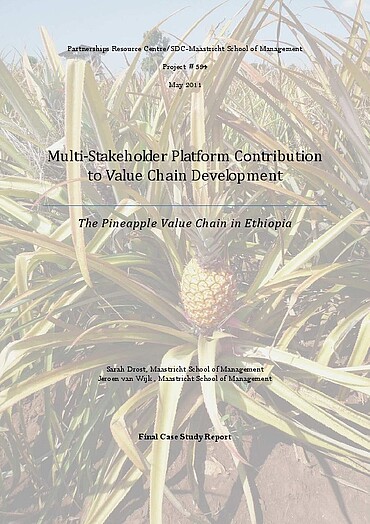Abstract
This report investigates the dynamics of a multi-stakeholder platform (named: coordination group, or CG) for stakeholders of the pineapple value chains in Ethiopia. The CG was initiated by the Dutch development organisation SNV in 2005 as part of a broader programme to improve market access for farmers and small- and mediumsized pineapple companies. To examine the MSP, both its internal, organisational dynamics and its external dynamics, i.e. the changes brought about in key areas of the institutional business environment, were analysed. A mixed-method design was used for the data collection and -analysis, including in-depth interviews with 13 key representative pineapple stakeholders participating in the CG meetings, document analysis, and a social network analysis. The dominant impression is that the CG generated some very useful effects in terms of bridging some traditional divides and offering opportunities for networking and knowledge dissemination. Yet, it seems the CG predominantly laid out the groundwork, with the edifice of a competitive, quality-aware pineapple export sector still to be built. Major causes of the somewhat slow progress have been the broad scope of the CG that has been addressing three different pineapple chains, the overrepresentation of the public sector that tended to slow down change processes, the CG’s national focus that keeps foreign buyers hidden from side, and the development of the CG into a competitor network to a small group of “monopolist” chain actors. On the other hand, changing business institutions that facilitate trust-building in the production base, that improve farmers’ access to capital and technology, and that make markets more predictable for chain actors is quite a challenge. Inserting an agricultural sector into the global economy takes time.
